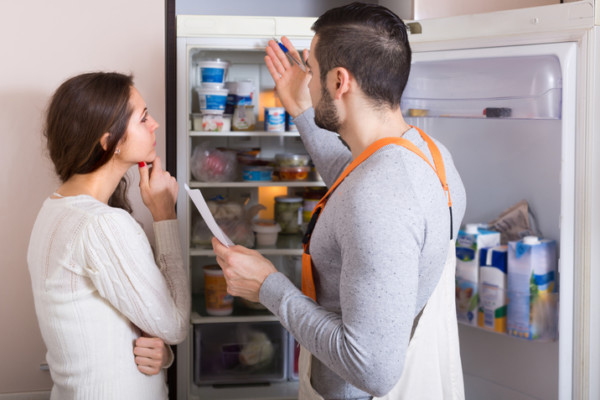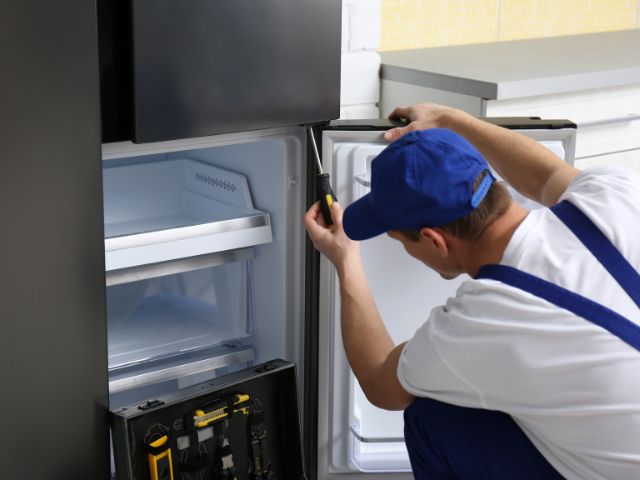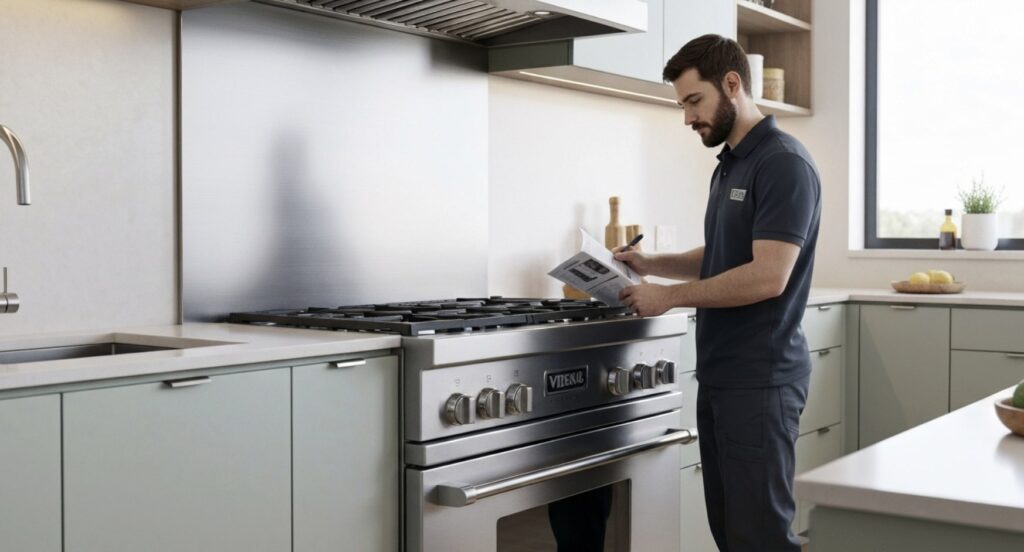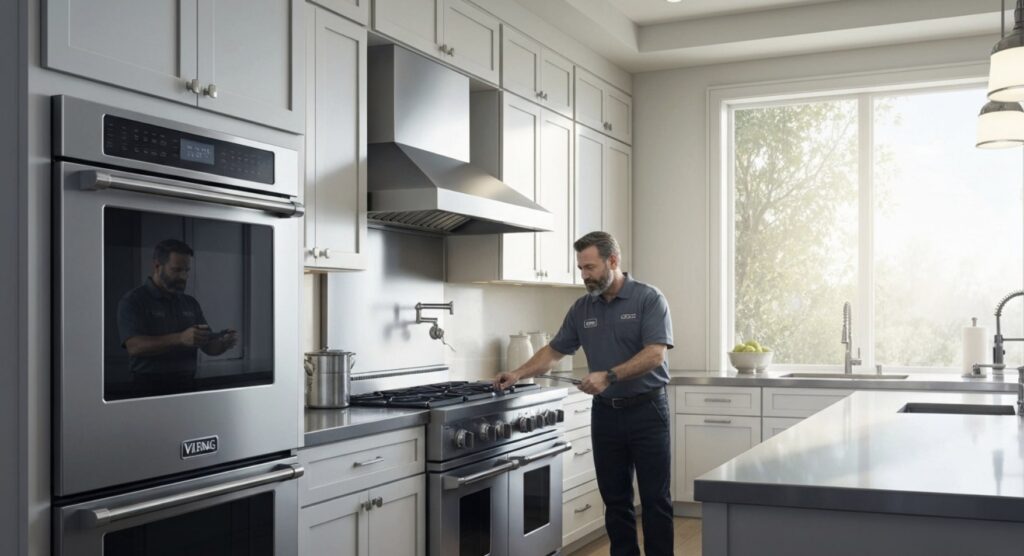Viking Refrigerator Not Cooling? Expert Repair Solutions
Is your Viking refrigerator not cooling properly? When your refrigerator fails to maintain the proper temperature, it can be frustrating and potentially lead to food spoilage. Understanding common issues with Viking refrigerators and knowing how to troubleshoot and repair them can help save you time and money. In this blog, we will explore the most common problems that cause a Viking refrigerator not cooling properly, and provide expert repair solutions to get your fridge back to optimal cooling performance. Whether it’s issues with the evaporator fan, condenser coils, or thermostat, we’ve got you covered. So, let’s dive in and find out how to resolve the cooling problems in your Viking refrigerator.
Identifying Common Problems with Viking Refrigerators
Before we delve into the specific reasons why your Viking refrigerator may not be cooling, let’s take a look at some common issues that can cause improper cooling. Understanding these common problems will help you identify the root cause and find suitable repair solutions. Some of the most common issues faced by Viking refrigerator owners include:
- Improper cooling: One of the most common issues encountered by Viking refrigerator owners is improper cooling. This can manifest as warm compartments or inconsistent cooling throughout the refrigerator.
- Faulty evaporator fan: The evaporator fan is responsible for circulating cold air throughout the refrigerator. A faulty evaporator fan can cause issues with cooling, leading to improper temperature regulation.
- Blocked condenser coils: Condenser coils play a crucial role in heat transfer. If they become dirty or blocked, they can interfere with proper cooling.
- Malfunctioning thermostat: The thermostat controls the temperature inside the refrigerator. If it is faulty, it can lead to cooling issues.
- Compressor start relay failure: The compressor start relay is responsible for starting the compressor motor. If it fails, it can result in the refrigerator not cooling properly.
Understanding Why Your Viking Refrigerator is not Cooling Properly
When your Viking refrigerator is not cooling properly, a failed evaporator fan could be the issue. This fan circulates cold air to maintain the proper temperature. If it stops working, improper cooling may occur, leading to inconsistent temperatures in different compartments. Promptly addressing a faulty evaporator fan is crucial to prevent further damage to your appliance.
Strange Noises from Your Viking Refrigerator and What They Mean
Refrigerators typically make noise during normal operation, but unusual sounds may signal a problem with the evaporator or condenser fan. Odd noises from your Viking fridge could indicate a faulty evaporator fan, responsible for circulating cold air. A malfunctioning fan can cause strange sounds. Similarly, issues with the condenser fan can also lead to unusual noises. If you hear such sounds, it’s best to have a professional technician inspect and fix the problem promptly.
Dealing with Water Leakage in Your Viking Refrigerator
Dealing with water leakage in your Viking refrigerator can be frustrating. A faulty ice maker or supply line is a common cause. Moisture accumulation and leaks can result if the ice maker is not connected properly or if the supply line is damaged. Condensation inside the refrigerator can also lead to leakage. Check the ice maker and supply line for visible issues first. If you can’t identify the cause, consult an appliance repair professional for effective diagnosis and repair.
Exploring Possible Solutions for Viking Refrigerator Issues
Now that we have identified some common issues that can cause cooling problems in Viking refrigerators, let’s explore possible solutions to address these issues. While some repairs may require the expertise of a professional refrigerator repair technician, there are also several DIY fixes that you can try. In the next sections, we will discuss common problems with Viking refrigerators, their potential solutions, and when it is appropriate to seek professional help. Whether you are comfortable attempting DIY repairs or prefer to leave it to the experts, understanding the potential solutions can help you make informed decisions and get your Viking refrigerator cooling properly again.
How to Reset Your Viking Refrigerator
One of the first steps you can take when facing cooling issues with your Viking refrigerator is to perform a reset. Resetting your refrigerator can help troubleshoot temporary glitches and restore proper cooling function. To reset your Viking refrigerator, start by unplugging it from the power supply. Leave it unplugged for a few minutes, then plug it back in. This will allow the control board to reset and may help resolve cooling issues. However, if resetting your refrigerator does not solve the problem, it is advisable to seek professional repair services to diagnose and repair any underlying issues.
Importance of Clean Condenser Coils and How to Maintain Them
Clean condenser coils are essential for optimal cooling performance in Viking refrigerators. Over time, dust, dirt, and other debris can accumulate on the condenser coils, hindering proper heat transfer and cooling. To maintain clean condenser coils, start by ensuring that the condenser fan motor is functioning properly. This fan helps circulate air through the coils, aiding in heat dissipation. Regularly check the coils for any visible signs of dirt or debris, and use a vacuum cleaner or a coil brush to gently remove any buildup. By maintaining clean condenser coils, you can promote proper airflow and prevent cooling issues in your Viking refrigerator.
The Role of the Thermistor in Temperature Regulation
The thermistor plays a vital role in temperature regulation in Viking refrigerators. It is a sensor that monitors the temperature inside the fridge and freezer compartments and relays that information to the control board. The control board, in turn, adjusts the cooling system to maintain the proper temperature. If the thermistor is faulty or out of calibration, it can disrupt the temperature regulation, leading to cooling issues. To ensure proper temperature control, it is crucial to regularly inspect and test the thermistor. If you suspect that the thermistor is malfunctioning, it is advisable to contact a professional refrigerator repair technician to diagnose and replace the faulty component.
Understanding the Function of the Evaporator Fan
The evaporator fan is a critical component in Viking refrigerators. Its main function is to circulate cold air throughout the fridge, ensuring consistent cooling. When the evaporator fan is working correctly, it helps maintain proper temperature levels and airflow, preventing cold spots or warm areas inside the refrigerator. However, if the evaporator fan fails or malfunctions, cold air circulation may be restricted, resulting in improper cooling. If you suspect that a failed evaporator fan is causing cooling issues in your Viking refrigerator, it is recommended to consult a professional repair technician who can diagnose and replace the faulty fan, restoring proper cooling performance.
Checking the Temperature Control Thermostat
The temperature control thermostat is an essential component of Viking refrigerators. It regulates the cooling levels, ensuring that the refrigerator maintains the desired temperature. If the thermostat is faulty, it may cause cooling issues, such as temperature fluctuations or failure to cool properly. To check the temperature control thermostat, start by adjusting the temperature settings to the coldest setting. Listen for a click sound, indicating that the thermostat relay has engaged. If you do not hear a click, it may indicate a faulty thermostat that requires replacement. In such cases, it is advisable to seek professional repair services to ensure proper diagnosis and repair of the thermostat.
When to Seek Professional Help
There are several signs that indicate the need for a Viking repair technician for your refrigerator. If you experience any of the following issues, it may be time to seek professional help:
- Warm compartments: If certain compartments in your Viking fridge remain warm despite adjusting the temperature settings, it may indicate a more serious cooling problem that requires professional attention.
- Excessive frost buildup: If you notice excessive frost or ice buildup inside the freezer or refrigerator compartments, it could be a sign of a faulty defrost system that needs repair.
- Unusual noises: Strange sounds, such as clicking, buzzing, or grinding, coming from the refrigerator can indicate issues with components like the compressor start relay, requiring professional repair.
- Repeated breakdowns: If your Viking fridge frequently breaks down or experiences recurring issues, it is best to consult a repair technician who can address the underlying cause and prevent further breakdowns.
Choosing Between DIY and Professional Repair
When it comes to repairing your Viking refrigerator, you may have the option to choose between DIY repair and professional repair services. While DIY repairs can be cost-effective, it is important to consider the complexity of the problem and your own expertise before attempting repairs yourself. Simple fixes like cleaning condenser coils or replacing a faulty fan motor can often be done as DIY projects. However, for more complex issues or if you lack the necessary tools or skills, professional repair services are a good idea. They have the expertise and experience in handling Viking appliances, ensuring proper diagnosis and repair that extends the life of your refrigerator.
The Role of Viking Appliance Repair Pros in Fixing Your Refrigerator
When it comes to Viking refrigerator repairs, relying on the services of Viking Appliance Repair Pros can make all the difference. Our experts have the knowledge, experience, and tools necessary to accurately diagnose and repair your refrigerator. We understand the intricacies of Viking appliances and are equipped to handle both common issues and complex problems. Whether it’s replacing a faulty compressor, repairing control boards, or resolving cooling inconsistencies, our skilled repair technician will ensure that your Viking refrigerator is running smoothly and efficiently, giving you peace of mind and extending the life of your appliance.
Frequently Asked Questions
When should one consider calling a professional for repairs on a Viking refrigerator that is not cooling?
If standard troubleshooting methods fail to restore cooling, unusual noises persist, visible damage is present, or the fridge remains warm despite adjustments, it’s time to seek professional Viking refrigerator repair. Seeking help is crucial when DIY efforts prove ineffective.
Are there any specific maintenance tips for ensuring optimal cooling performance in a Viking refrigerator?
To ensure optimal cooling performance in your Viking refrigerator, it is important to follow specific maintenance tips. Regularly clean the condenser coils to ensure efficient heat transfer and airflow. Check and replace the door gaskets if they are worn out or damaged to maintain a proper seal, preventing cool air leakage. Avoid overloading the refrigerator, as it can restrict proper air circulation. Monitor the temperature settings and adjust as needed to keep the refrigerator cool. By following these maintenance tips, you can maintain optimal cooling performance in your Viking refrigerator and prevent common issues.
Conclusion
In conclusion, understanding the common issues with Viking refrigerators and their solutions is crucial for maintaining optimal cooling performance. Regular maintenance, such as cleaning condenser coils and monitoring temperature regulators, can prevent major problems. Knowing when to seek professional repair help is key to resolving complex issues efficiently. If you’re still facing challenges with your Viking refrigerator, consulting experienced appliance repair technicians like Viking Appliance Repair Pros can offer tailored solutions. For more insights on Viking refrigerator maintenance and repairs, check our “Must-Know Indicators for Viking Refrigerator Repair” blog for more information.







